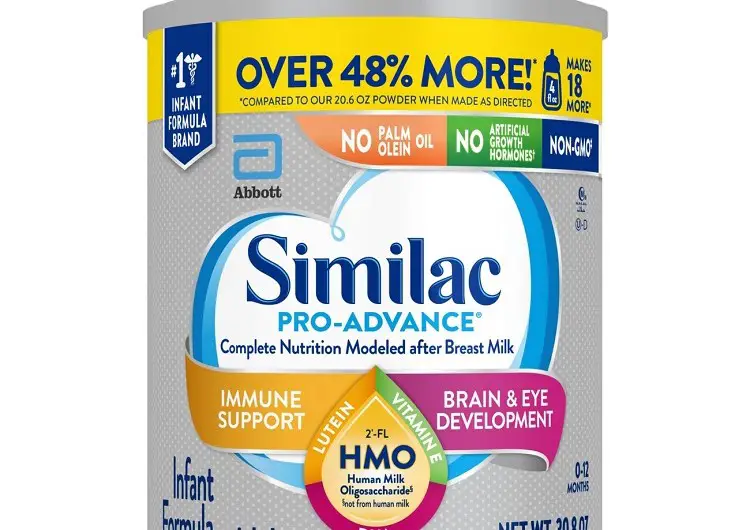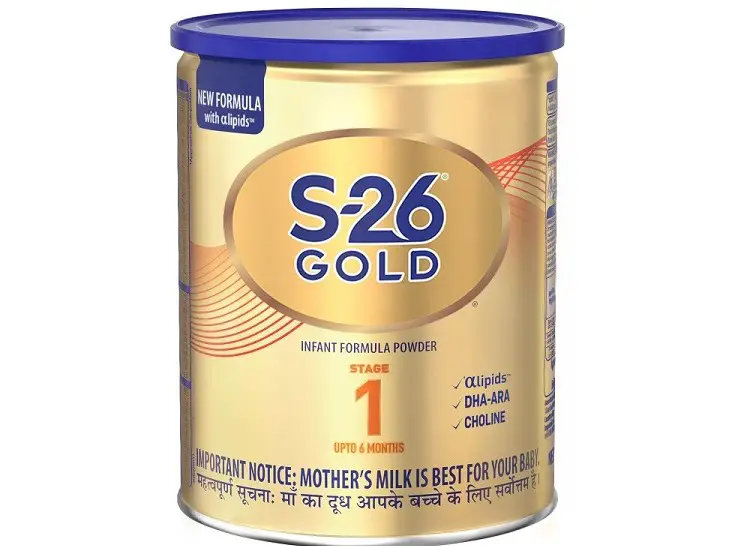All babies under one year need breast milk to form a solid foundation for their immune system and growth.
But not all mothers have the luxury of breastfeeding their new horns due to different challenges; health, worth, inadequate breast production, or even choice. This is where many parents opt for formulas in the formative years of their babies.
Have you ever wondered which of the Similac vs S26 formulas would be the best choice for your child?
We will provide you with a lot of information about these two brands in this article so that you can make an informed choice.
Table of Contents
- Similac Vs S26: Overview
- Similac Vs S26 – Features, Pros & Cons
- Similac Vs S26: Similarities & Differences
- FAQs
- Final Verdict
Similac Vs S26: Overview
If you’re familiar with formulas, you’d understand that it is best to get the one closest to breast milk in taste and texture.
More manufacturers are beginning to make their products close to natural breast milk, but some offer more of the same nutrients in breast milk than others.
And not all formulas are suitable for all age groups. Therefore, comparing two different products like the Similac Vs S26 is necessary.
Some people who have used both products affirm that both are similar and offer the same brain support as breast milk.
A group of polyunsaturated fatty acids in breast milk, known as Omega 3, is present in both Similac and S26. These fatty acids help supports brain growth and maintains a healthy body.
If your children have no feeding issues, consider going for Similac Pro Advance. It is made and designed to be very similar to breast milk.
Remember, choosing formula isn’t dependent on the product alone but on the individual, you’re feeding. Just like adults, babies also have food preferences and will settle with the product he is more comfortable with.
However, some babies react to formulas containing ingredients they’re allergic to, so you shouldn’t keep trying different products on your baby.
There are many ways to tell if a formula is appropriate for your baby without feeding it to him; one good way is to look at the components of the products, the pros and the cons.
Similac Vs S26 – Features, Pros & Cons
Similac Baby Formula

Similac is a Canadian product that is a close imitation of breast milk with the same 2′-FL as contained in breast milk which builds a baby’s immune system against certain illnesses at their stage.
Although it is made from cow milk, it is a non-GMO product and does not contain artificial growth hormones. The Omega fats present in it are responsible for brain growth.
Features
- It contains DHA and Lutein in most of its products.
- Omega 3 fats are present and good for the eyes.
- They’re usually powdered, and a few liquid products are concentrated.
- Their products can cover a child from birth up to 36 months.
Pros
- It is easy to digest
- It contains 2’-FL HMO (human milk oligosaccharide). A prebiotic found in breast milk.
- It doesn’t have any artificial growth hormones to create false growth.
- It has DHA and Omega 3 fats in breast milk and is necessary for the baby.
- Some of their products are lactose-free for babies who are lactose intolerant.
- It is baby friendly
- Easy to carry
- Cases of constipation associated with the product are low
Cons
- It may not be easy to prepare because of its powdered form
- Some products can cause vomiting and fever
- The milk in it can cause blood in stool
- Can cause constipation
S26 Baby Formula

The product is an Australian product that has won the trust of thousands of Australian parents with its over 100 years of research.
It is made with whey protein and contains both DHA and AHA in Omega 3 fats.
Even though it doesn’t contain any natural breast milk, it is closely related to breast milk and has products that can to taken from the time of birth till when your baby becomes a toddler.
Features
- Its improved product, S26 Gold, contains sphingomyelin and phospholipids.
- It contains DHA, iron, and Choline to support brain development.
- It has vitamins A and D; vitamin A supports the immune system, and vitamin D helps develop stronger bones.
- It is made with whey protein.
Pros
- The vitamins present are adequate.
- Selenium is also present in it to support the immune system
- Sphingomyelin and phospholipids are both components of the brain cell membrane
- It contains Choline, and it supports the baby’s development
- It is gentle and has no funny smell
Cons
- It can cause constipation in some babies
- Preparation may be difficult and time-consuming
Read: Formulas That Taste Closest To Breast Milk
Similac Vs S26: Similarities & Differences
There are no two exact products when it comes to formulas; even within the same company, there are variations.
Similac and S26 may appear the same but have similarities and differences.
The similarities between both products may suggest that you can switch from one of the brands to another, but the differences will throw more light on the safety of switching products.
Similarities
- Both are starter products that you can start feeding your baby from birth.
- Breast milk is the inspiration for both products.
- They’re both gentle and child friendly
- They both contain DHA
- Both contain whey protein
Differences
- Similac doesn’t use palm oil during production
- S26 seems more gentle than Similac
- There are more cases of constipation in babies who take Similac
- Similac doesn’t contain sphingomyelin and phospholipids like S26
- S26 doesn’t have 2′-FL
Related Posts:
- Aptamil vs S26
- Similac vs Holle
- Similac vs Lactogen vs Nan
- Enfamil vs Similac vs Gerber
- Promil vs Similac – Which is Better?
- Aptamil Comfort vs Similac Total Comfort
FAQs
Which is The Best Formula Between Similac Vs S26?
It depends on your baby’s preference because both formulas are suitable for all ages and contain the necessary nutrients to support your baby’s growth.
Still, since both are not the same, their taste and texture make them unique to your baby.
There’s no one formula that is best for all babies. Observe yours know his preference, and go by it.
Can you switch From one of the products to another?
Since both products are closely related, switching from one to another is easier.
However, you must do it gradually because of your baby’s frail system. It needs time to adapt progressively to any new products you’ll be introducing to.
Start by switching both products in between his meal times to observe how well he accepts them before switching completely.
Start with the most gentle products of the new brand you’d be switching to and gradually adjust.
Final Verdict
Every formula differs from another and depends on your baby’s nutritional needs. You don’t have to jump at every product you see.
All formulas come with age-appropriate products to suit babies at different ages so that if your baby is comfortable with a particular brand, there won’t be any need to switch to another.
But you can only know the preferable one between Similac Vs S26 if your baby accepts it without reacting to it.
If your baby children have no feeding issues, consider going for Similac Pro Advance. It is made and designed to be very similar to breast milk.
The formula is lactose-free and bears a striking resemblance to breast milk. It also contains 2’FL HMO ((human milk oligosaccharide), a prebiotic found in breast milk, and, when consumed, confers health benefits on your baby and your baby’s immune system.
